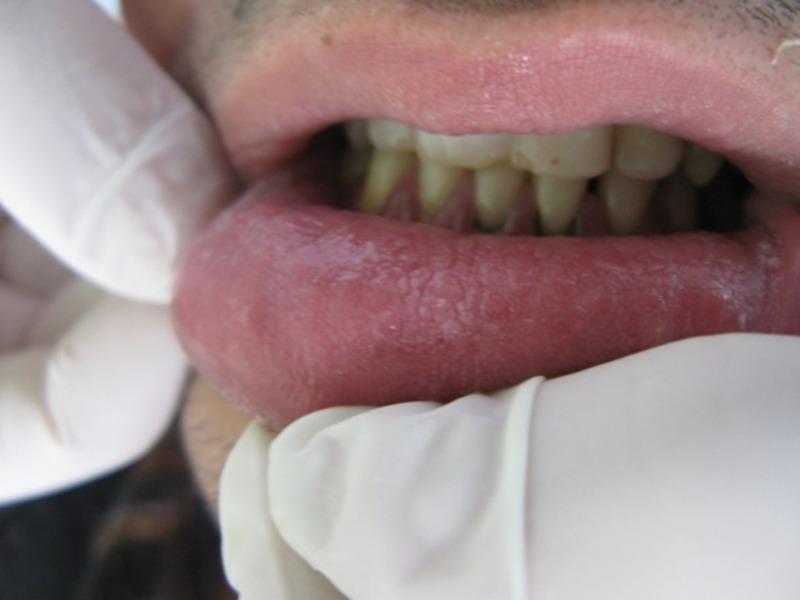Sandbox GGC17
From Proteopedia
(Difference between revisions)
(New page: ==Name of your Protein== <StructureSection load='3VEV' size='340' side='right' caption='Caption for this structure' scene=''> This is a default text for your page. Click above on '''edit t...) |
|||
| (23 intermediate revisions not shown.) | |||
| Line 1: | Line 1: | ||
| - | == | + | ==Keratin 4== |
| - | <StructureSection load=' | + | <StructureSection load='4RMB' size='340' side='right' caption='Keratin 4 protein' scene=''> |
This is a default text for your page. Click above on '''edit this page''' to modify. Be careful with the < and > signs. | This is a default text for your page. Click above on '''edit this page''' to modify. Be careful with the < and > signs. | ||
| - | You may include any references to papers as in: the use of JSmol in Proteopedia <ref>DOI 10. | + | You may include any references to papers as in: the use of JSmol in Proteopedia <ref>DOI 10.1128/IAI.00717-07</ref> or to the article describing Jmol <ref>PMID:2117679</ref> to the rescue. |
== Function == | == Function == | ||
| - | + | KRT 4 gene is going to provide enough information to create the protein Keratin 4. Keratins are the main groups for tough fibrous proteins that will form the framework of epithelial cells. Epithelial cells line up at the surfaces and cavities that are intended for the body. Keratin 4 is usually found within the moist lining of your mouth, nose, esophagus, anus, and gentitals. | |
== Disease == | == Disease == | ||
| - | + | The disease that Keratin 4 causes is called white sponge nevus. White sponge nevus is an autosomal dominant disease which is caused by a mutation of a certain keratin gene. White sponge nevus is going to be a main componenet for a group of inherited diseases that are going to provide a white bilateral, keratinized apperance typically appearing on the buccal mucosa. [[Image:joddd-3-70-g001.jpg]] White sponge nevus lesions on the inside of the lips.<ref>PMID: 23230487</ref> | |
== Relevance == | == Relevance == | ||
| - | + | The two way parallel beta-sheet is where the C-terminal strand of one monomer is being positioned and anti-parallel to the N-terminal strand of the main adjacent monomer and this arrangement is not seen so far in any of the homologous structures. This is the <scene name='87/874949/00rainbow_ribbon/1'>Keratin 4 protein</scene>. The C-terminal strand is comprimised of residues from 485-642 that have been identified to essentially bind to Keratin 4.<scene name='87/874949/00sheet1_res/1'>C-terminal strand</scene> | |
== Structural highlights == | == Structural highlights == | ||
| - | This is a sample scene created with SAT to <scene name="/12/3456/Sample/1">color</scene> by Group, and another to make <scene name="/12/3456/Sample/2">a transparent representation</scene> of the protein. You can make your own scenes on SAT starting from scratch or loading and editing one of these sample scenes. | + | This is a sample scene created with SAT to <scene name="/12/3456/Sample/1">color</scene> by Group, and another to make <scene name="/12/3456/Sample/2">a transparent representation</scene> of the protein. You can make your own scenes on SAT starting from scratch or loading and editing one of these sample scenes. The main serine residues 311-641 as you can see from the structure will constistute as a non-repeat ligand binding region. This is the <scene name='87/874949/00helix1_res/1'>Beta Sheet residues zoomed in</scene>. This is the <scene name='87/874949/00helix1_res/2'>Beta Sheet residues zoomed out</scene> |
</StructureSection> | </StructureSection> | ||
== References == | == References == | ||
<references/> | <references/> | ||
Current revision
Keratin 4
| |||||||||||
References
- ↑ Samen U, Eikmanns BJ, Reinscheid DJ, Borges F. The surface protein Srr-1 of Streptococcus agalactiae binds human keratin 4 and promotes adherence to epithelial HEp-2 cells. Infect Immun. 2007 Nov;75(11):5405-14. doi: 10.1128/IAI.00717-07. Epub 2007 Aug, 20. PMID:17709412 doi:http://dx.doi.org/10.1128/IAI.00717-07
- ↑ Moore PS, Hierholzer J, DeWitt W, Gouan K, Djore D, Lippeveld T, Plikaytis B, Broome CV. Respiratory viruses and mycoplasma as cofactors for epidemic group A meningococcal meningitis. JAMA. 1990 Sep 12;264(10):1271-5. PMID:2117679
- ↑ Aghbali A, Pouralibaba F, Eslami H, Pakdel F, Jamali Z. White sponge nevus: a case report. J Dent Res Dent Clin Dent Prospects. 2009 Spring;3(2):70-2. doi:, 10.5681/joddd.2009.017. Epub 2009 Jun 5. PMID:23230487 doi:http://dx.doi.org/10.5681/joddd.2009.017

